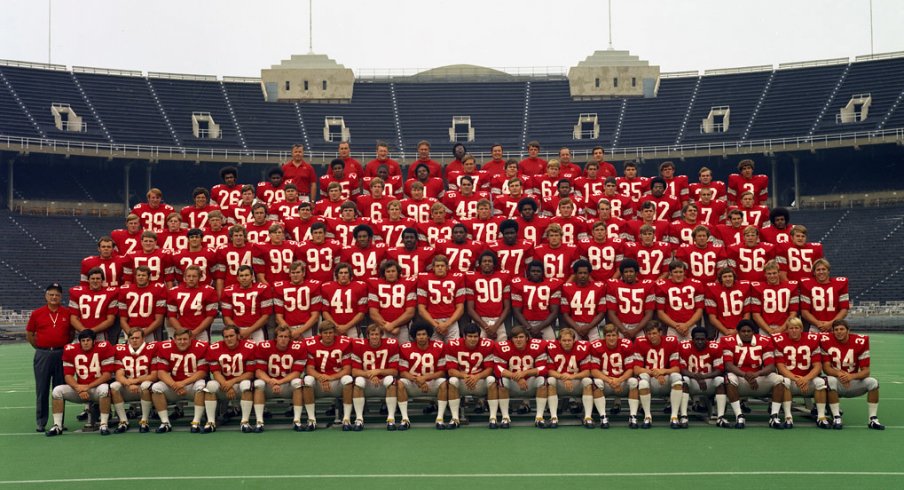A year before the arrival of Archie Griffin, the 1971 Buckeyes were in a transition year. After finishing 9-1 with a No. 2 ranking in the AP Poll before a Rose Bowl defeat at the hands of Stanford, the Bucks lost 17 starters to graduation, including quarterback Rex Kern, hard-hitting safety Jack Tatum, and linemen Jim Stillwagon.
Starting at quarterback for the new-look Buckeyes would be senior Don Lamka, a back-up defensive back for the past two seasons. Lamka, hailing from Cleveland and "the most sought-after quarterback in the Midwest" in 1967, had not played quarterback since arriving in Columbus.
Despite the new faces all over the field, the Bucks started the season strong. Ohio State defeated Iowa 52-21 in a muddy game that saw the two teams combine for nine fumbles. Lamka ran for 100 yards and four touchdowns while throwing for another 60 yards but fumbled on his first career snap.
Because of the inconsistent first game from the senior in Week One, no one could have expected what would happen next.
The next week, Colorado came to Columbus where Ohio State was riding a 19-game home win streak. For three quarters, however, the Buckeye offense was silent as the home team was down 13-0 heading into the fourth. Then, Lamka came alive to give the Bucks a chance.
Given a short field after a good punt return, Lamka's first pass drew a pass interference call, pushing the offense just outside the red zone. Then, a long pass put the Bucks on the goal line, which Lamka rushed in a couple of plays later.
With five minutes to play, Hayes opted for an onside kick. The Bucks failed to recover, giving Colorado a short field; the Buffaloes extended their lead to 20-7.
With three-and-a-half minutes remaining, Lamka threw five straight completions for 67 yards to give the Buckeyes their second touchdown in the last three minutes. He connected with Rick Middleton for the 14-yard score.
Hayes then opted for another onside kick, which was recovered successfully by the home team. A penalty, however, came down for illegal touching, stating the Buckeyes had recovered the ball before it traveled ten yards.
After forcing a three-and-out, however, the Buckeyes still had a chance. There was 1:05 on the clock and 95 yards to go. Lamka, however, could not repeat his magic from the previous drive. After completing two passes to his own 43-yard line, his final throw fell incomplete as the clock ran out.
Despite the loss and poor offensive performance for much of the game, Lamka made history; he was the first Buckeye in program history to account for 300 yards of offense. His 255 passing yards while completing 60.6% of his passes and 60 rushing yards on 23 attempts pushed him to an Ohio State record.
Ohio State's rushing attempts against Colorado yielded just 2.59 yards per attempt while the Bucks averaged 7.73 yards per pass. The difference in yards led Hayes, most famous for his "three yards and a cloud of dust" philosophy, say "If I had known what I know now, I would have gone to the passing game a lot sooner".
The Buckeyes, however, would not lean on Lamka for the rest of the season. The senior ended the year with just 718 passing yards and two passing touchdowns, meaning his game against Colorado accounted for over 35% of his career passing yards and 50% of his career passing touchdowns.
Cornelius Greene matched his 300-yard mark in 1974. It has since been repeated a number of times.
The 1971 team finished 6-4 and had 39 different players start throughout the year. The Buckeyes finished the season on a three-game losing streak and could not claim a part of the Big Ten title for the first time in four years, a trend that begin again in 1972.


